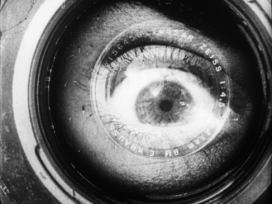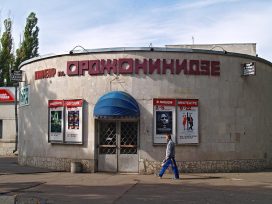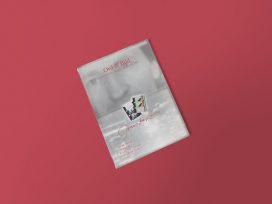The talent of the actor is one of the most elusive and difficult to define phenomena. Analytical treatment of the art of the actor can be found in essays published from the end of the sixties by Samo Simcic in the journal Nasi razgledi. Among writers on theatre, Blaz Lukan offered this fragile matter the most attention in the nineties, already in his piece on How to conserve the actor at the symposium. On the problematic conservation of theatre culture held as part of the Maribor Theatre Festival in 1987. In his later texts the emphasis shifted to selected roles from contemporary theatre production. As the compilation of these texts Tihozitja in grimase (Aristej, 2007) summarizes, “the actors don’t speak through a description or psychology of sorts, but through their body and its life”. In this way, Lukan makes a departure from the linear approach of theatre criticism. At the 1987 symposium, Vasja Predan added that the memory of only one living role of a single living actor in the experiential sense reveals more than anything that can be read about this same actor, and in a different way.
The performance Mandicstroj (“Mandic Machine”), which follows the structure of a collage and is part of the performance series Via Nova – in the framework of Via Negativa, a contemporary performing arts project initiated by artistic leader and director Bojan Jablanovec – is an extension of two solo performances from 2009, Ekstrakt Mandic and Viva Mandic, and of the performance essay Mandic? What the fuck is Mandic? from 2011, all in the production of Via Negativa. Marko Mandic, born in 1974, who after completing his studies at the Academy for Theatre, Radio, Film and Television in Ljubljana and gaining experience at the Lee Strasberg Institute in New York, joined the actors’ ensemble at the Ljubljana Drama in 1998 and won the award of the Preseren Fund in 2009 for a series of his theatrical roles, shows in Mandicstroj that the memory of the actor is an indigo, a sponge that absorbs everything, for a considerable time.
The number of roles has risen in the meantime. In Mandicstroj, which encompasses 38 torsi, created in the time span 1996-2010, the question of authorship does not arise. Every role is articulated and conserved inside the broad frame, and at first glance it glorifies one of the acting fundaments of Via Negativa (the deep impact of the latter on the dramaturgical thought of theatre in Slovenia has not yet been fully evaluated). Homo ludens in front of us plays his game, being unbound by prejudice or limitations, and does not mystify any of his roles. His principal communication channel is the word, while the staging involves the continuous inclusion of the spectators as well. The animated public remains sufficiently invisible in its presence and does not compete with the word of Mandic. It is not possible to forget about the way in which spectators glowed as they passed over to the other side of Mandicstroj.
The procedure of Mandic is not purely fragmentation. The audience is an important part of the performance and this is expressed even more fully in the intimate space of Mala Drama SNG (the show was transferred there in November 2011) or at least gains its momentum only there; in other venues, the actor needs to use other strategies. While the radical performing arts practice for the time being exhibits a rather weak outreach in its construction of the genuine relation with the (continuously diminishing) audience, Mandicstroj tries out the liveness of the stage event without a populistic intention of any kind and does not present it as a stylized form or an aesthetic excess where the relationship between performer and spectator would be in vain. There is a subtle and non-violent tempting of the spectator into the sphere of the imaginary. Identification with “laymen” on stage, who as fragile, numb physicals yield to the orders of the actor, enables an extraordinary experience. Mandic crowns the spectator: after all, he acts to reach him, this is where he moves away from narcissism.
The parts of roles make up a thread of substance according to the context, not to the date of their origin, but the method of the staging is not pretentious. What attracts attention is the performative strength of jumping from one state of mind to the other that in the current dominance of the flattened televised era enables us to feel theatre in its flesh. Mandic takes over the attributes of a machine and its irrational and in a way comical fixation on reconstruction, multiplication or erasing of moments, images, words, thoughts – arbitrarily but as sovereign as one can imagine. He constructs reality as an interaction under control, regardless of unexpected adrenaline shocks. As an artist, he is fixed only on the technology of one’s own self, since the persistence in the body and the live presence, discarding digital mediation, is a challenge. The political strength of this excess is limited but this is exactly why there is no artificial boundary in the relationship with the auditorium of spectators left.
The actor intensively oscillates in connection with theatre directors who are able to feel the catalogue of his non-classical registers, and needs the space for experiment, in proportion with the enacted psyche and the words that are being articulated. The hopping between roles in Mandicstroj might seem almost a routine thing; the spectator yearns for something more, but this rare phenomenon has already in the time of his presence in the Slovene theatre to date (as well as in the German television sphere where he appeared in two series) determined the collective receptive apparatus to the extent that there is no turning back: the voracious animal of the spectator in us demands an increasing amount of Mandic. It could recently, in June 2012, reach him again in the most effective moments of the staging of In the solitude of cotton fields in the robust ambience of the Talum factory in Kidricevo (in the direction of Ivica Buljan), where the physis of Mandic is put together with the prolonged poetic stance of B. M. Koltes and results in the impressive twitch of the world’s logic of sale and demand.
Here lies another reason why Mandic, in spite of his being unexploited by the media, is a well known face in Slovenia. After the award for his role in the performance Ma&Al in Split, he even became the ‘name of the week’ on national radio, which for a theatre actor of his generation is not a usual thing – let’s leave aside the fact that the moderator of the telephone commentators easily “caught” a voter or two who have never truly seen Mandic on stage yet.
“Owing to digital technologies which allow us to virtualize, archive, transmit, mediate and network all kinds of data, nowadays it is possible to endlessly restore and reproduce, share and show, edit or delete the moments, images, words, thoughts of our life without a risky contact of two bodies, a suspense about reaction of somebody else. Our digital apparitions may be exposed and observed in the virtual world, yet our coexistence with others is becoming quite conservative – an interaction without a real risk. (…) It seems that insistence on the body and live presence is nowadays, and already, an anachronism of liveness; that live experience, as “the subject of the work” of contemporary performance art, is simply no longer real without digitalization of presence,” Marin Blazevic and Bojan Jablanovec write to accompany Mandic? What the fuck is Mandic? at the Performance Studies International Conference 17 in Utrecht.
Accordingly, Mandicstroj among the costume remnants of the previous years plays with roles at the meta-level, simulates them, already “withdrawn” from them, re-enacts them, as if he never has and never will leave their trajectory (the relation between the ‘original’ and ‘repetition’ has often been dealt with in various performances of Via Negativa). This gives him the freedom to play with copies of his live presence; to list and arrange his ‘portrait of a young man’ which is thus presented as a documentary but not a dead thing. The auditorium is not faced with historical matter through which the actor would try to point out that he would still cope with. He tries out (invents) a new form of conservation of the past acting material. When he addresses the most reliable carrier of his past autopsy, his own self, he in a way confronts the theatre history as a genre dealing with the subject which no longer exists. Are the possibilities of archiving that we use today comparable or more efficient from the previous ones at all?
In this way, Mandic jumps over the reductions of the written records and reduces himself on his own. He reflects a playfulness that does not want to get conserved and shows an ironic form of (auto)archiving. A live encounter can do more, a physical experience which reaches the irrational sphere and with it the essential truth which gets recognized by a subjective gaze. When a suggestive experience exceeds pure memory, the actor is not an archeological fossil. Mandicstroj poses the question on the essence of the contemporary acting which lies in its elusiveness, in reconstructing with a difference, in listing the roles from one’s own stage history. In the elusive nature of the human being as such. The spectator catches the essence of Mandic’s moment in the live confrontation with him, this is what makes him paradoxically (instantly) eternal in the secret of his art, not tied to anecdotes or handy fables.
As a footnote: the question about the role of the co-author Jablanovec in the making of Mandicstroj remains unanswered deliberately. In fact, a longer list of authors who began exploring the theatre language already in the nineties (Vlado Repnik, Barbara Novakovic, Marko Peljhan, as well as Silvan Omerzu) could well be called in to creatively work with the actors (pre- or post-academy), but Slovenia has simply not evolved a proper educational platform for their know-how. To some extent, this succeeded only for Emil Hrvatin/Janez Jansa with collaborators who evolved Maska from publicist to educational-productional spheres.






